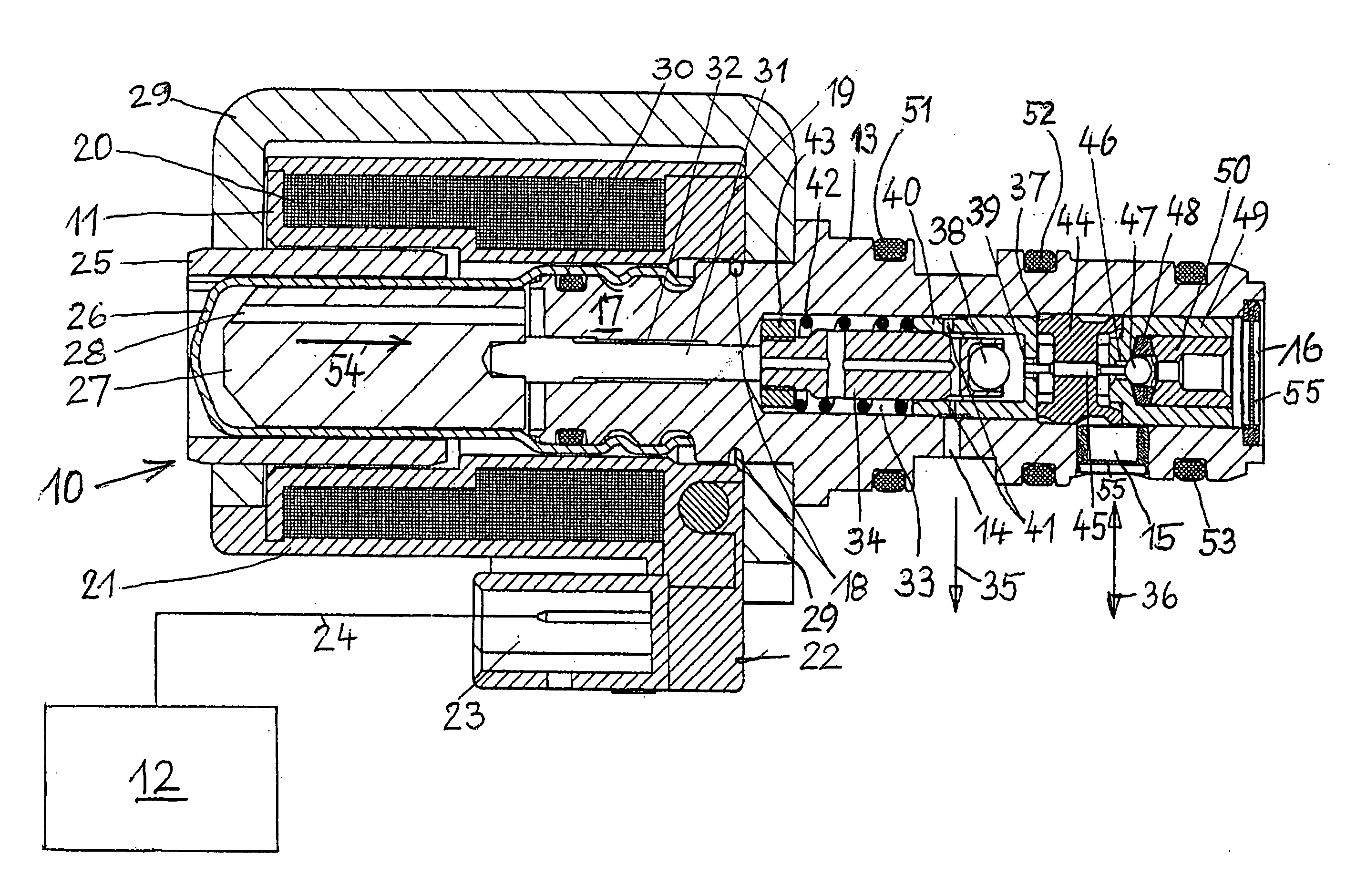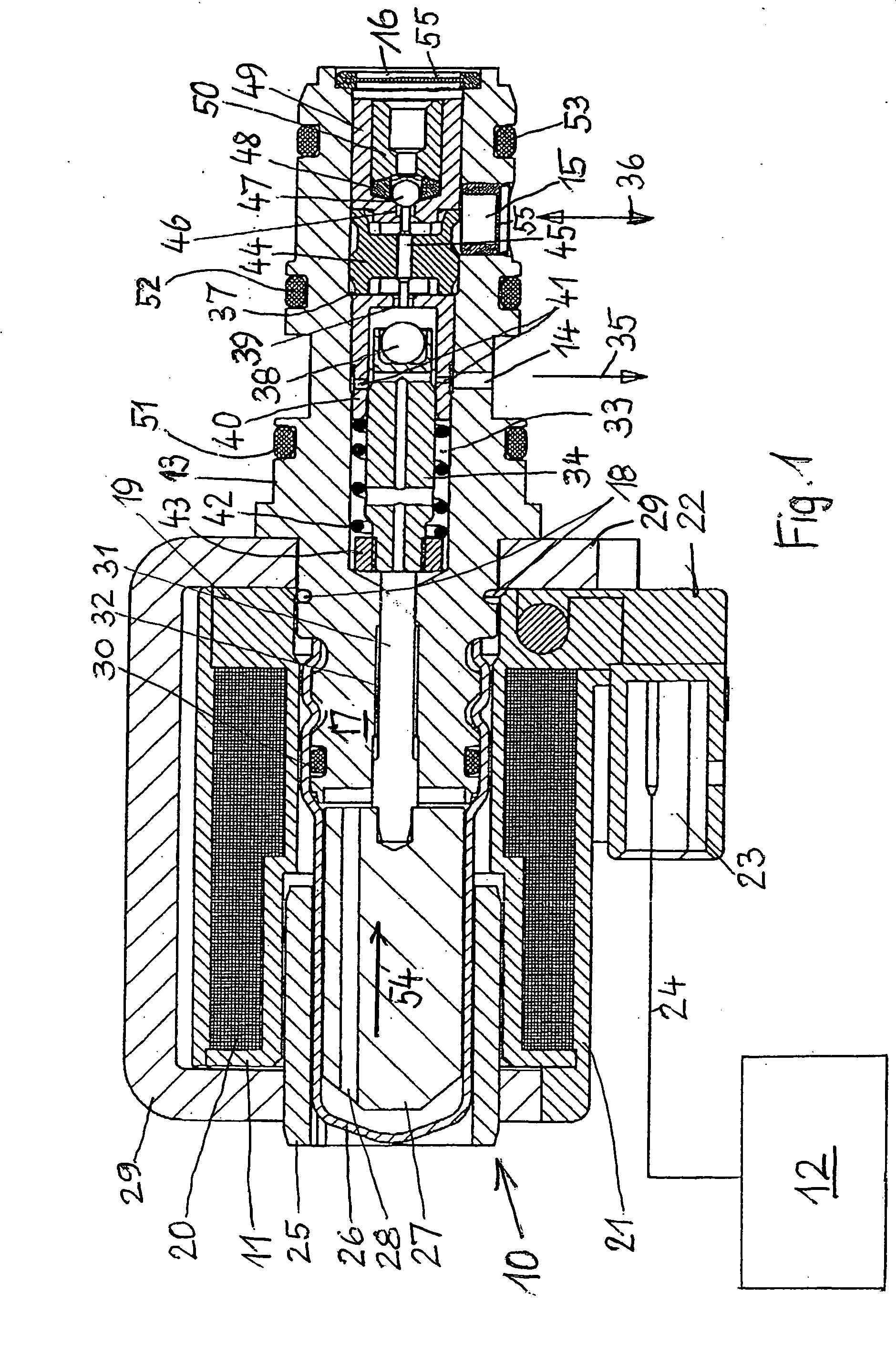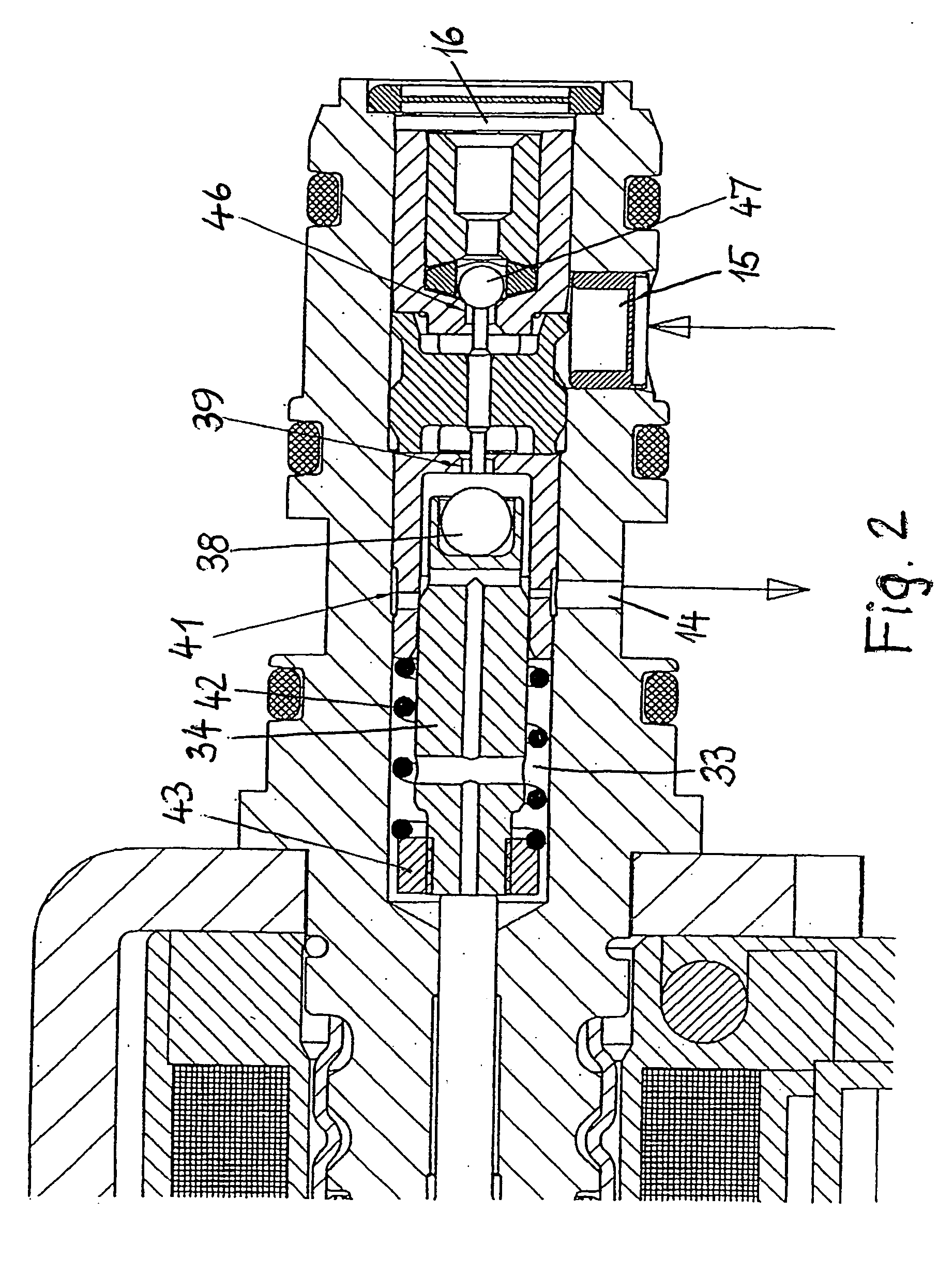Controllable solenoid valve
a solenoid valve and control technology, applied in the direction of valve details, valve operating means/releasing devices, mechanical equipment, etc., can solve the problems of reducing the flow cross section between the connection openings, requiring more effort, and disturbing the noise and rebound of the valve, so as to prolong the cylindrical interior, reduce the noise and rebound, and avoid leakage.
- Summary
- Abstract
- Description
- Claims
- Application Information
AI Technical Summary
Benefits of technology
Problems solved by technology
Method used
Image
Examples
Embodiment Construction
[0020]FIG. 1 shows a solenoid valve 10 which principally consists of an electromagnet 11 with an electric control unit 12 and a housing 13 provided with connection openings 14, 15 as well as a connection 16. One end 17 of the housing 13 located opposite to the connection 16 projects into the electromagnet 11 and is fixed to it by pins 18 or screws. The two components 11 and 13 could also be connected with each other by a screwed joint.
[0021] The electromagnet 11 is a wire-wound coil 20 the wire of which is wound around a hollow winding body 19 made of insulation material. If an electric current flows through the coil 20, the coil generates a magnetic field that depends on the value of this current flow. Along its circumference, the coil 20 is provided with an electrically insulating and heat-dissipating extrusion coating 21. At one terminal 22 of the winding body 19, a plug-type connector 23 is provided for a line 24 leading to the electric control unit 12 that supplies a current o...
PUM
 Login to View More
Login to View More Abstract
Description
Claims
Application Information
 Login to View More
Login to View More - R&D
- Intellectual Property
- Life Sciences
- Materials
- Tech Scout
- Unparalleled Data Quality
- Higher Quality Content
- 60% Fewer Hallucinations
Browse by: Latest US Patents, China's latest patents, Technical Efficacy Thesaurus, Application Domain, Technology Topic, Popular Technical Reports.
© 2025 PatSnap. All rights reserved.Legal|Privacy policy|Modern Slavery Act Transparency Statement|Sitemap|About US| Contact US: help@patsnap.com



